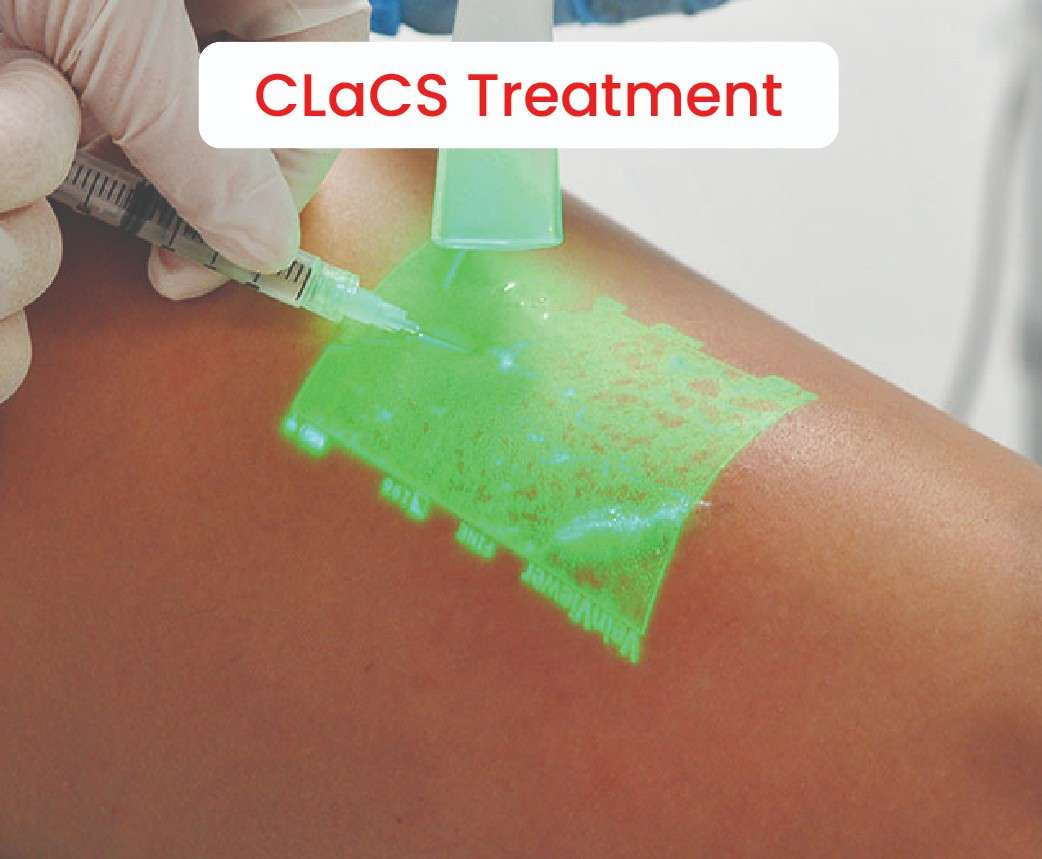CLaCS (Cryo-Laser and Cryo-Sclerotherapy) is an innovative vein treatment combining laser therapy with sclerotherapy to address varicose and spider veins. Recent research and feedback from patients highlight this minimally invasive approach as a comfortable and effective option, offering both lasting results and minimal recovery time.
A study published in Phlebology (2023) by Dr. Paulo Peixoto and colleagues found that CLaCS achieved a 95% improvement in visible veins among 300 patients, with a high satisfaction rate of 92%. These findings emphasize the treatment’s effectiveness and patient-centered benefits, especially as an alternative to more invasive procedures.
How CLaCS Works
CLaCS combines two primary techniques:
- Laser Therapy: A targeted laser collapses the problematic vein, minimizing its appearance and redirecting blood flow to healthier veins.
- Sclerotherapy: A sclerosing agent is then injected into the treated vein, sealing it further and allowing the body to absorb it gradually.
A unique aspect of CLaCS is the cryotherapy (cold air) applied during treatment to reduce discomfort. This blend of techniques offers a quick, effective, and minimally invasive treatment with little downtime, making it an appealing alternative to traditional methods like vein stripping.
Research Findings on CLaCS Benefits
Dr. Peixoto’s study highlights the key benefits of CLaCS, including:
- Quick Recovery: Patients returned to their daily routines the day after treatment, with minor side effects like mild redness or bruising that resolved within a few days.
- High Satisfaction and Visible Results: According to the study, 92% of patients were pleased with the treatment’s cosmetic and symptom relief results, seeing improvements within weeks, particularly in hard-to-treat areas.
- Low Risk of Complications: With its minimally invasive nature, CLaCS had a very low risk of complications, as patients reported only minor, temporary side effects.
Experiences with CLaCS from Indian Patients
Priya, 34, Mumbai had been struggling with spider veins for a while, and was looking for something that wouldn’t need too much recovery time. CLaCS worked perfectly for her. The procedure was short, and thanks to the cooling effect, she felt little discomfort. Within just a few weeks, her spider veins had faded noticeably. She says it was exactly what she hoped for!”
According to Rohit, 45, from Bangalore: “My job keeps me on my feet all day, and my varicose veins made it difficult to get through. CLaCS was a lifesaver—I was back at work the next day, feeling lighter and more comfortable than I’d been in years. The best part? The treatment was quick and I didn’t need much time off. I recommend it to anyone dealing with vein issues.”
Anjali, 39, Delhi, says “I tried a couple of treatments before, but nothing really worked well enough. CLaCS was surprisingly easy, and the cooling effect kept me comfortable. I didn’t even need to wear compression stockings after, which was a relief. My legs look so much better now, and I feel much more confident. It’s been a great experience!”
Karan, 52, Hyderabad says “I’d put off treating my varicose veins because I thought it’d need surgery. With CLaCS, the procedure was quick, and I had minimal discomfort. It’s been a month, and I can already see the difference—my legs feel lighter, and the veins are much less visible. Wish I’d done it sooner!”
Why This Research and Feedback Matter
Dr. Peixoto’s study, combined with these firsthand experiences, showcases CLaCS as an ideal treatment option for people seeking a minimally invasive solution for vein issues. Its fast recovery, high satisfaction rates, and minimal risks are drawing more people toward CLaCS over traditional treatments.
For anyone dealing with varicose or spider veins, CLaCS offers a reliable, effective, and comfortable solution. These positive results, supported by both scientific research and patient testimonials, make CLaCS an increasingly trusted choice in India, providing patients with relief, confidence, and the ability to return to daily life quickly and comfortably.


